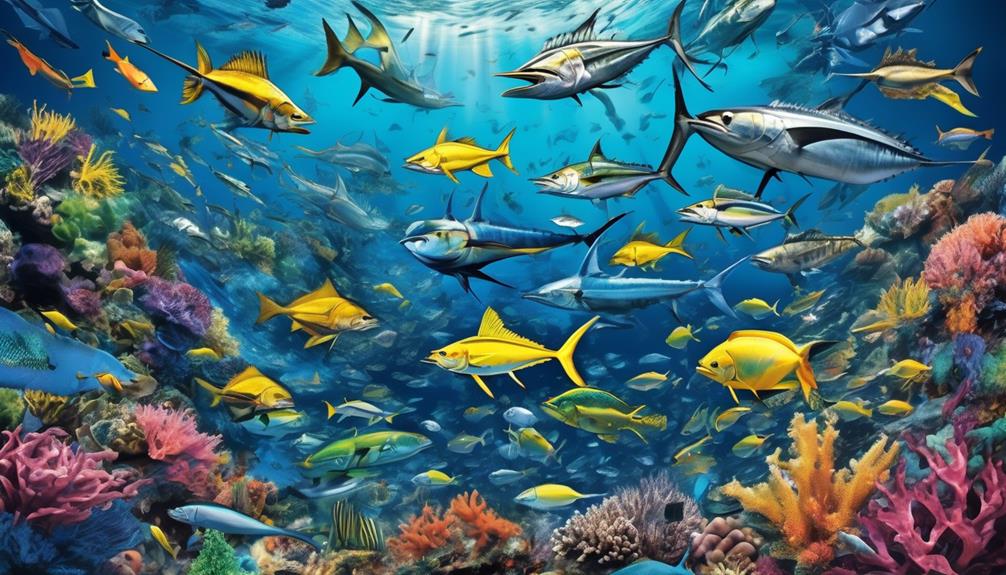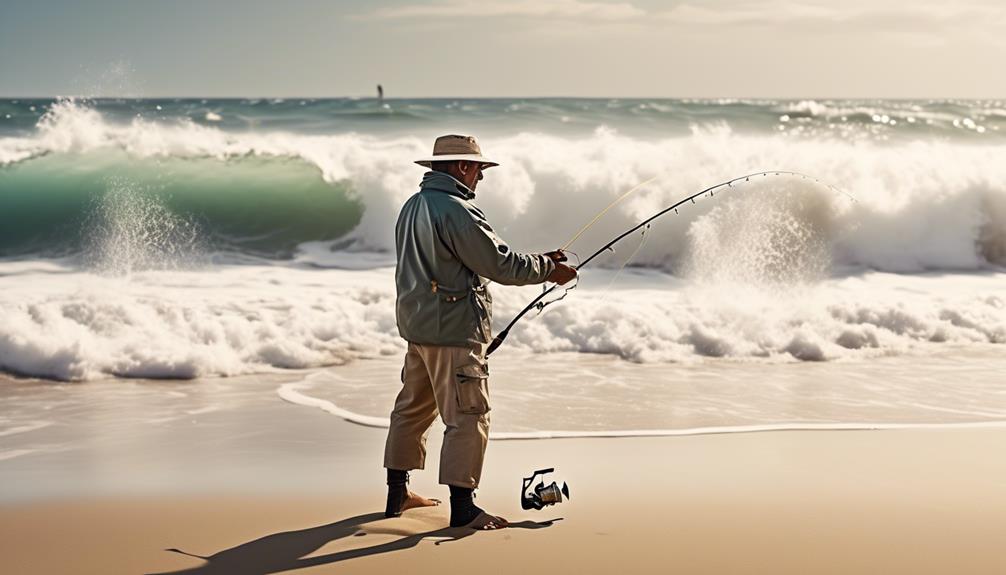Picture yourself out on the open sea, the sun just beginning to peek over the horizon, casting a warm glow on the vast expanse of water. The promise of an exciting day of deep sea fishing lies ahead, where the thrill of reeling in some of the ocean's most prized catches awaits.
As you prepare to embark on this adventure, knowing which saltwater fish are the best for deep sea fishing can make all the difference between a successful and disappointing day on the water. Whether you're a seasoned angler or a newcomer to the sport, understanding the nuances of targeting specific species can greatly enhance your chances of landing the big one.
So, let's dive into the world of deep sea fishing and uncover the top nine tips for targeting the best saltwater fish.
Marlin
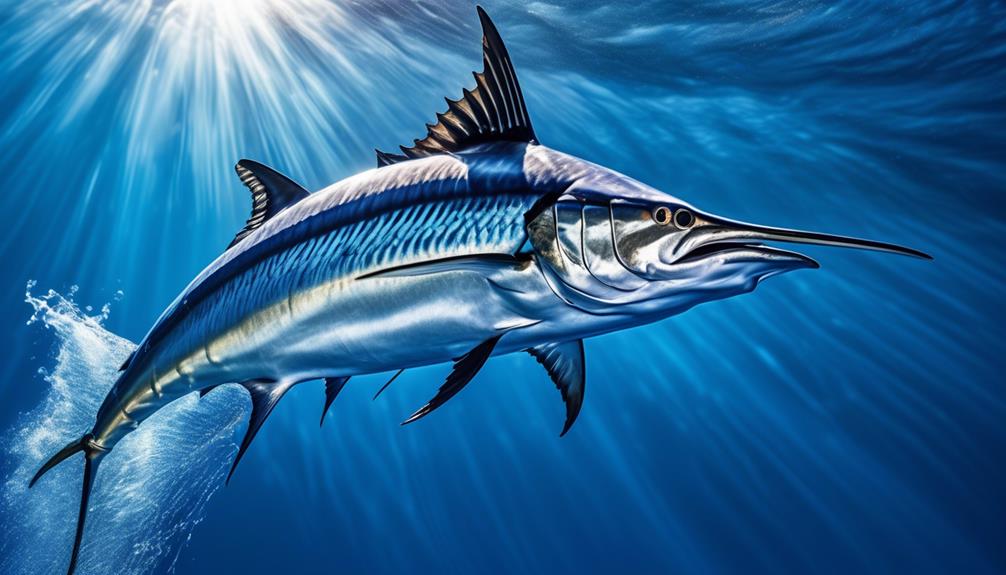
When deep sea fishing for marlin, you'll want to be prepared for a thrilling and challenging experience. Marlin are known for their incredible speed and strength, making them a highly sought-after catch for seasoned anglers. To increase your chances of a successful marlin fishing trip, it's essential to understand their behavior and habitat.
Marlin are often found in deep waters, so you'll need to venture far from the shore to locate them. Look for areas with a high concentration of baitfish, as marlin are known to feed in these areas.
When targeting marlin, it's crucial to have the right equipment. A sturdy fishing rod and reel capable of handling large, powerful fish are a must. Additionally, using heavy-duty fishing line and leaders will help prevent the marlin from breaking free during the fight. Live bait, such as tuna or mackerel, is preferred when targeting marlin as they're attracted to the movement and scent of live prey.
Patience is key when deep sea fishing for marlin. These elusive creatures may not strike immediately, so be prepared for long periods of waiting. Once hooked, marlin are known for their acrobatic displays, often leaping out of the water in an attempt to shake the hook. It's important to remain calm and focused during this intense battle.
Tuna
As you target tuna for deep sea fishing, you can apply your expertise in handling powerful fish, similar to the thrilling challenge of catching marlin. Tuna are known for their incredible strength and speed, making them a prized catch for any angler.
Here are some tips to enhance your tuna fishing experience:
- Locate the Schools: Tuna are highly migratory and often travel in schools. Look for diving birds, large bait balls, or temperature breaks to locate these schools. Once you find them, you're in for an action-packed fishing adventure.
- Use the Right Bait: Tuna are voracious predators and are attracted to a variety of bait including live baitfish, squid, and artificial lures. Make sure to have a good selection of bait to increase your chances of enticing a bite.
- Employ Proper Gear: When targeting tuna, it's crucial to have strong and durable gear. Heavy-duty rods, reels with a high line capacity, and strong braided line are essential to handle the power of these fish.
- Master the Fight: After hooking a tuna, be prepared for an intense battle. Tuna are known for their long, powerful runs and impressive aerial displays. Maintain a steady pressure on the fish and be patient as you work to bring it alongside your boat.
Mahi Mahi
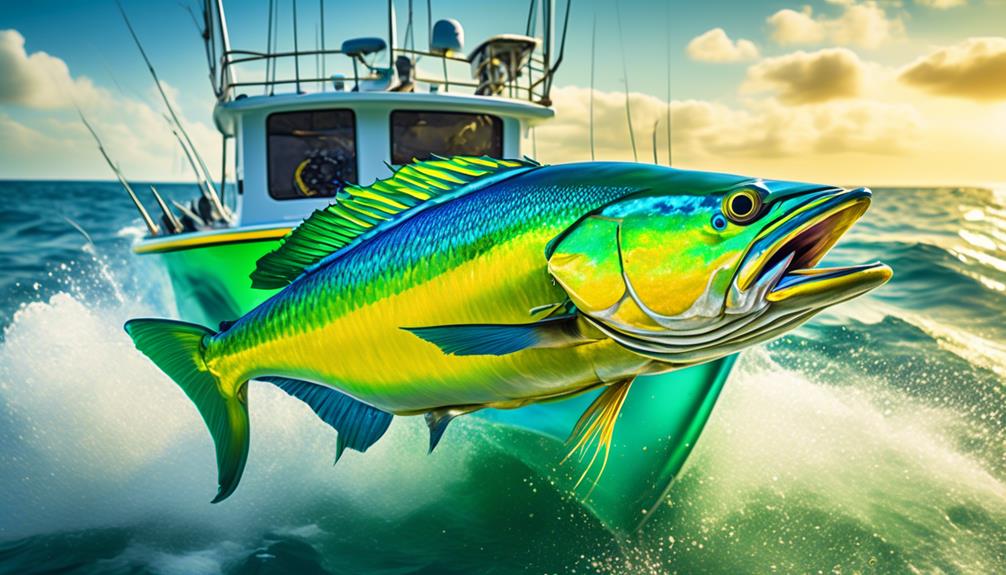
Mahi Mahi, also known as dolphinfish, is a popular target for deep sea fishing enthusiasts due to its vibrant colors, acrobatic behavior, and delectable flesh. These fish are easily recognizable by their dazzling mix of green, gold, and blue hues, making them a sought-after species for both recreational and commercial anglers.
When hooked, Mahi Mahi are known for their acrobatic displays, often leaping out of the water in a dazzling spectacle, providing an exhilarating challenge for anglers. Their impressive fighting ability and high-speed runs make them a thrilling catch for anyone seeking an adrenaline-pumping deep sea fishing experience.
Mahi Mahi are prized not only for their sporting qualities but also for their culinary appeal. The firm, mildly sweet flesh of Mahi Mahi is a favorite among seafood connoisseurs, making it a highly sought-after catch for those looking to bring home a delicious meal. Whether grilled, blackened, or used in ceviche, Mahi Mahi's versatile meat is a delectable treat that adds a touch of luxury to any dining experience.
In addition to their visual appeal and culinary value, Mahi Mahi are known for their abundance in warm ocean waters worldwide, making them readily accessible to deep sea fishing enthusiasts. Their migratory patterns and tendency to gather around floating objects, such as seaweed and debris, provide ample opportunities for anglers to target these dazzling fish in offshore waters. Whether you're a seasoned angler or a novice fisherman, targeting Mahi Mahi promises an exciting adventure and a delicious reward.
Sailfish
One of the most thrilling catches for deep sea fishing enthusiasts is the sailfish, known for its impressive speed and acrobatic displays. When you're out on the water, keep an eye out for these magnificent creatures and be prepared for an exhilarating experience.
Here are some tips to enhance your sailfish fishing adventure:
- Timing is Key: Sailfish are known for their seasonal migration patterns. Plan your deep sea fishing trip during peak sailfish season for the best chance of a successful catch. In many locations, this tends to coincide with the winter months, when sailfish are abundant in offshore waters.
- Keep an Eye on the Water: Look for signs of baitfish, diving birds, or other indicators of fish activity. Sailfish are often found near the surface, particularly in areas with high concentrations of baitfish. Paying attention to the water's surface can lead you to where the sailfish are feeding.
- Trolling Techniques: Trolling with artificial lures or rigged baits is a popular method for targeting sailfish. Experiment with different trolling speeds and lure presentations to find what works best on a given day. Sailfish are known for their aggressive strikes, making trolling an exciting way to hook them.
- Be Prepared for Action: Once hooked, sailfish put on an impressive aerial display, leaping and thrashing in an attempt to shake the hook. Be ready for their acrobatics and hold on tight to your rod. Sailfish are known for their speed and agility, so get ready for an adrenaline-pumping battle.
Wahoo
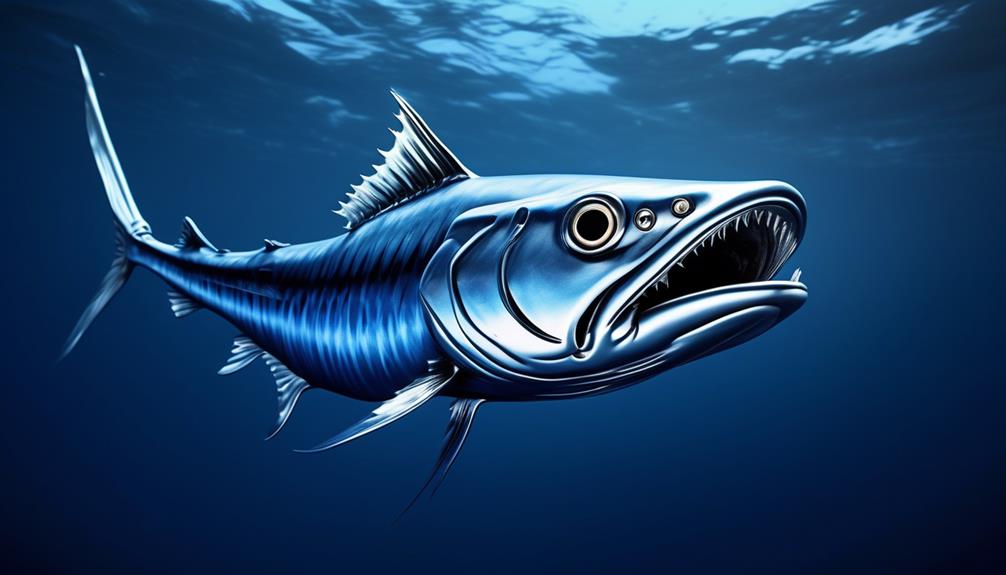
During your deep sea fishing expeditions, targeting wahoo will provide an exhilarating challenge due to their speed and powerful strikes. Wahoo, also known as ono, are highly sought after for their incredible speed and agility. These sleek predators are known for their blistering runs and acrobatic leaps, making them a thrilling catch for any angler.
When targeting wahoo, it's essential to use high-speed trolling techniques with lures or baits that can withstand the tremendous force of their strikes. Wahoo are known for their explosive hits, often resulting in drag-screaming runs that will test your skills and equipment to the limit. Their speed and strength make them a formidable opponent, requiring anglers to be prepared for an intense battle once hooked.
One of the key tactics for wahoo fishing is to cover a large area while trolling at high speeds. These fish are often found in open water near reefs, drop-offs, and underwater structures, so it's crucial to keep an eye on your surroundings and be ready to adjust your trolling patterns accordingly.
When a wahoo strikes, it's essential to stay focused and maintain constant pressure to prevent them from using their speed to escape. These fish are known for their sharp teeth, so using a wire leader is recommended to prevent bite-offs.
Swordfish
Targeting swordfish after the excitement of catching wahoo will test your deep-sea fishing skills in a whole new way. Swordfish are known for their strength and speed, making them a thrilling challenge for any angler.
Here are some tips to help you master the art of catching swordfish:
- Deep Drop Fishing: Swordfish are typically found in deep waters, often at depths of 1,500 feet or more. Utilize specialized deep drop rigs and heavy-duty electric reels to reach these depths effectively.
- Use Light Attraction: Swordfish are attracted to light, so using powerful underwater lights can increase your chances of attracting them to your bait. Consider using LED lights that can be submerged deep into the water to attract swordfish to your bait.
- Patience is Key: Swordfish are known to be elusive, and it may take hours before you get a bite. Be prepared to wait patiently while keeping a close eye on your equipment for any signs of activity.
- Be Prepared for a Fight: Once hooked, swordfish are powerful fighters and can put up a tremendous battle. Make sure your tackle is strong enough to handle the force of a swordfish and be ready for a challenging fight to reel them in.
Amberjack

Reeling in an Amberjack can provide an exhilarating challenge for deep sea anglers due to their powerful fighting abilities and impressive size. Amberjacks are known for their strength and speed, making them a prized catch for those seeking a thrilling fishing experience. These aggressive fish are found in deep offshore waters, often near wrecks, reefs, or other underwater structures.
When targeting Amberjack, it's essential to use heavy-duty tackle and gear, as they can grow to substantial sizes and put up a fierce battle when hooked. One of the key tips for successfully catching Amberjack is to utilize live bait such as small fish or squid, as they're highly responsive to live prey. Additionally, employing techniques like vertical jigging or topwater casting can be effective in enticing these voracious predators. It's important to remain alert and ready for a powerful strike once an Amberjack takes the bait, as they're known for their sudden and aggressive feeding behavior.
When an Amberjack is hooked, be prepared for a challenging battle. These fish are relentless fighters and will test the endurance of even the most experienced anglers. It's crucial to maintain a firm grip on the fishing rod and remain patient, as reeling in an Amberjack can be a demanding task. Once successfully landed, the sense of accomplishment and adrenaline rush that comes from conquering an Amberjack makes it a highly sought-after species for deep sea fishing enthusiasts.
Grouper
Grouper are prized by deep sea anglers for their impressive size and strength, providing an exciting challenge for those seeking a rewarding fishing experience. These powerful fish are known for their tenacity and can be found in tropical and subtropical waters around the world.
Here are some tips for targeting grouper on your next deep sea fishing adventure:
- Choose the Right Bait: Grouper are opportunistic feeders and will go after a variety of baits including live fish, squid, and even artificial lures. Using the right bait can significantly increase your chances of a successful catch.
- Focus on Structure: Grouper are often found near underwater structures such as reefs, wrecks, and rock formations. Targeting these areas can yield great results as grouper use these structures for shelter and ambushing prey.
- Be Patient and Persistent: Grouper are known for their strength and stubbornness once hooked. It's crucial to be patient and persistent when fighting a grouper, as they'll often try to retreat back into their lair.
- Use Heavy Tackle: Due to their size and strength, grouper require heavy tackle to stand a chance of landing them. Using a strong rod, heavy line, and a sturdy reel is essential when targeting these formidable fish.
Snapper
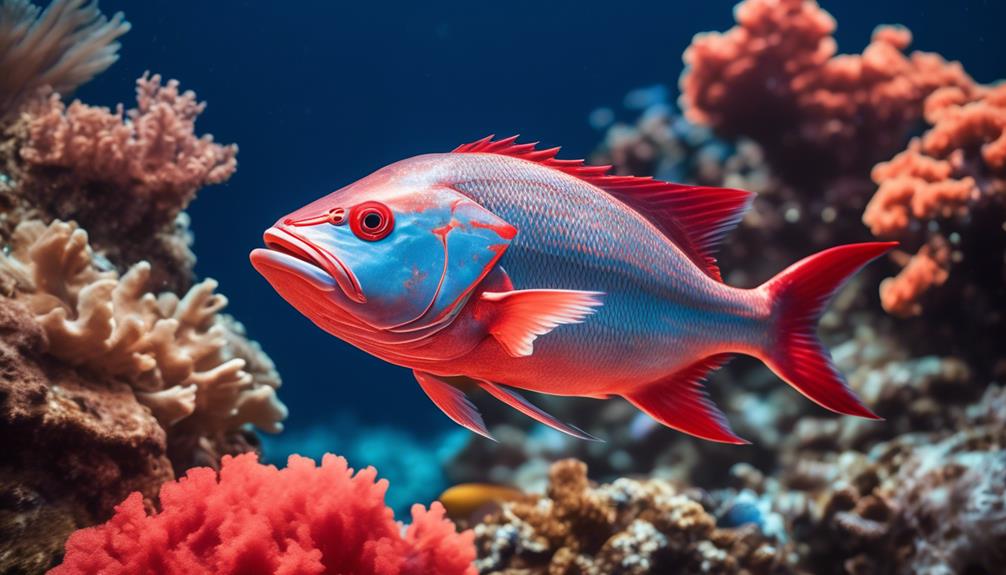
Snapper, a popular catch among deep sea fishermen, can be found in a variety of coastal and offshore environments, providing a thrilling challenge for anglers. These prized fish are known for their fighting spirit and delicious taste, making them a sought-after species for both sport and culinary purposes.
When targeting snapper, it's essential to understand their behavior and preferred habitats. Snapper are often found around structures such as reefs, wrecks, and underwater ledges, where they seek shelter and ambush their prey. Additionally, they're known to inhabit areas with strong currents, adding an extra layer of complexity to the angling experience.
One of the most effective techniques for catching snapper is bottom fishing with live or cut bait. This method allows you to present the bait near the ocean floor, where snapper are known to forage. Patience and attentiveness are crucial when waiting for the subtle but distinctive bite of a snapper. Once hooked, be prepared for a fierce battle, as these strong, agile fish will do their best to escape.
Popular snapper species targeted by deep sea fishermen include the red snapper, mangrove snapper, and yellowtail snapper. Each species has its own unique behaviors and preferences, adding to the challenge and excitement of pursuing them. Whether you're fishing from a boat or casting from shore, the thrill of reeling in a powerful snapper is an experience that deep sea anglers cherish.
Frequently Asked Questions
What Are the Best Techniques for Targeting Swordfish in Deep Sea Fishing?
To target swordfish in deep sea fishing, use deep drop rigs with squid or fish bait, fish at night, and look for temperature breaks. Keep your baits deep, and be patient for a successful catch.
How Do You Properly Handle and Release a Large Marlin After Catching It?
When releasing a large marlin after catching it, gently hold its bill to prevent injury. Keep the fish in the water to allow it to regain strength before releasing it. Take care to properly support the fish's body.
What Are the Differences in Feeding Habits Between Tuna and Mahi Mahi in Deep Sea Fishing?
When fishing for tuna and mahi mahi in deep sea, remember that tuna are voracious predators that feed on smaller fish, while mahi mahi are opportunistic feeders, often eating flying fish and squid. Keep these differences in mind when selecting bait.
Are There Any Specific Regulations or Restrictions for Catching Wahoo in Certain Deep Sea Fishing Locations?
In some deep sea fishing locations, there are specific regulations and restrictions for catching wahoo. Check local fishing authorities for rules on size limits, bag limits, and closed seasons to ensure compliance.
What Is the Best Bait to Use for Targeting Amberjack and Grouper in Deep Sea Fishing?
For targeting amberjack and grouper in deep sea fishing, the best bait is live baitfish like blue runners or pinfish. They are effective in attracting these fish due to their natural behavior and scent.
Conclusion
So next time you're out deep sea fishing, keep these top saltwater fish in mind. Whether you're after the thrill of reeling in a powerful marlin or the delicious taste of a fresh mahi mahi, there's something for every angler in the deep sea.
With the right tips and techniques, you'll be well on your way to a successful and rewarding deep sea fishing experience. Happy fishing!
